The construction of the wonderful canon of logarithms
The construction of the wonderful canon of logarithms
The construction of the wonderful canon of logarithms
Create successful ePaper yourself
Turn your PDF publications into a flip-book with our unique Google optimized e-Paper software.
32 Construction <strong>of</strong> <strong>the</strong> Canon.<br />
iionals in <strong>the</strong> first column <strong>of</strong> <strong>the</strong> Third table may be found<br />
with sufficient exactness^ or may be included between known<br />
limits difiering by an insensible fraction.<br />
For, since (by 43) <strong>the</strong> logarithm <strong>of</strong> 9995000,<br />
<strong>the</strong> first proportional after radius in <strong>the</strong> first<br />
column <strong>of</strong> <strong>the</strong> Third table, is 5001.2485387 with<br />
no sensible error ; <strong>the</strong>refore! (by 32) <strong>the</strong> logarithm<br />
<strong>of</strong> <strong>the</strong> second proportional, namely 9990002.5000,<br />
will be 10002.4970774; and so <strong>of</strong> <strong>the</strong> o<strong>the</strong>rs, proceeding<br />
up to <strong>the</strong> last in <strong>the</strong> column, namely<br />
9900473.57808, <strong>the</strong> logarithm <strong>of</strong> which, for a like<br />
reason, will be 100024.9707740, and its limits will<br />
be 100024.9657720 and 100024.9757760.<br />
45. To find <strong>the</strong> <strong>logarithms</strong> <strong>of</strong> natural numbers or sines not<br />
proportionals in <strong>the</strong> first column <strong>of</strong> <strong>the</strong> Third table, but<br />
near or between <strong>the</strong>m ; or to include <strong>the</strong>m, between known<br />
limits differing by an insensible fraction.<br />
Write down <strong>the</strong> sine in <strong>the</strong> first column <strong>of</strong> <strong>the</strong><br />
Third table nearest <strong>the</strong> given sine, whe<strong>the</strong>r<br />
greater or less. By 44 seek for <strong>the</strong> limits <strong>of</strong> <strong>the</strong><br />
logarithm <strong>of</strong> <strong>the</strong> table sine.<br />
<strong>The</strong>n, by one <strong>of</strong> <strong>the</strong><br />
methods described in 43, seek for a fourth proportional,<br />
which shall be to radius as <strong>the</strong> less <strong>of</strong><br />
<strong>the</strong> given and table sines is to <strong>the</strong> greater. Having<br />
found <strong>the</strong> fourth proportional, seek (by 43) for<br />
<strong>the</strong> limits <strong>of</strong> its logarithm from <strong>the</strong> Second table.<br />
When <strong>the</strong>se are found, add <strong>the</strong>m to <strong>the</strong> limits <strong>of</strong><br />
<strong>the</strong> logarithm <strong>of</strong> <strong>the</strong> table sine found above, or<br />
else subtract <strong>the</strong>m (by 8, 10, and 35), and <strong>the</strong><br />
limits <strong>of</strong> <strong>the</strong> logarithm <strong>of</strong> <strong>the</strong> given sine will be<br />
brought out.<br />
Example.<br />
THUS,<br />
let <strong>the</strong> given sine be 9900000. <strong>The</strong><br />
proportional sine nearest it in <strong>the</strong> first<br />
column


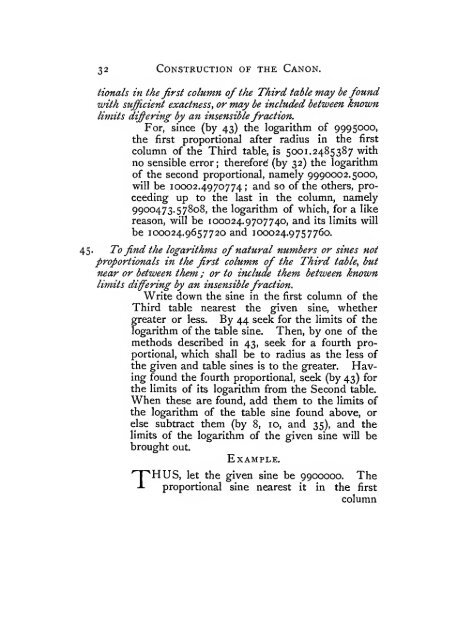
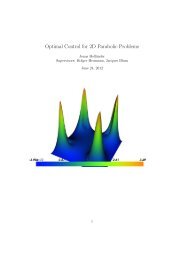
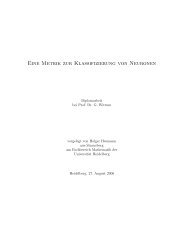
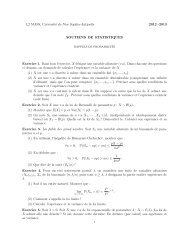
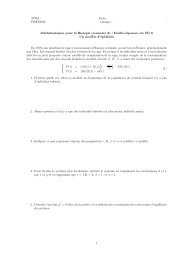


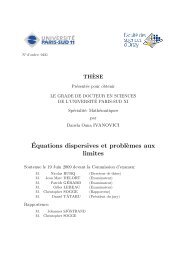
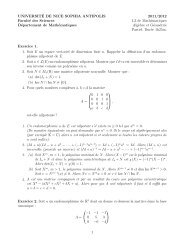
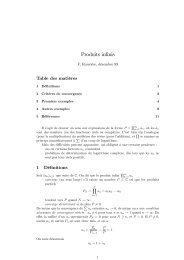
!['eries enti\`eres (+ [D78 Th d'Abel angulaire])](https://img.yumpu.com/14067031/1/184x260/eries-entieres-d78-th-dabel-angulaire.jpg?quality=85)

